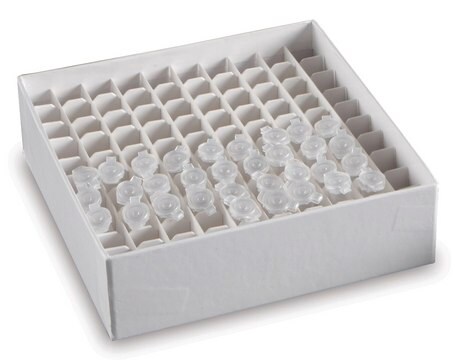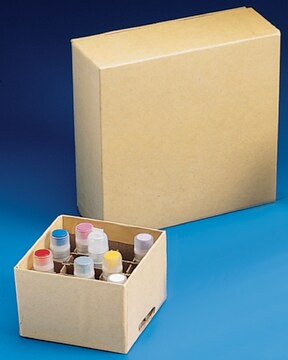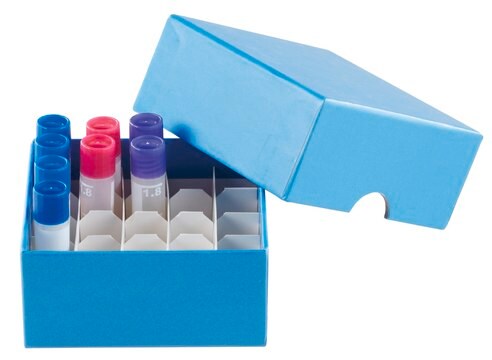MABS1284
Anti-Apolipoprotein(a) Antibody, clone LPA4
clone LPA4, from mouse
Synonym(e):
Apolipoprotein(a), Apo(a), Lp(a)
About This Item
Empfohlene Produkte
Biologische Quelle
mouse
Antikörperform
purified immunoglobulin
Antikörper-Produkttyp
primary antibodies
Klon
LPA4, monoclonal
Speziesreaktivität
human, primate
Methode(n)
ELISA: suitable
immunohistochemistry: suitable (paraffin)
immunoprecipitation (IP): suitable
western blot: suitable
Isotyp
IgG1κ
UniProt-Hinterlegungsnummer
Versandbedingung
ambient
Posttranslationale Modifikation Target
unmodified
Angaben zum Gen
human ... APOA1(335)
Allgemeine Beschreibung
Spezifität
Immunogen
Anwendung
Zelluläre Signaltransduktion
Immunohistochemistry Analysis: A 1:25 dilution from a representative lot (pre-conjugated with biotin) detected Apo(a) in paraffin-embedded human carotid artery tissue sections (Courtesy of Dr. Sotirios Tsimikas, M.D., University of California at San Diego, USA).
ELISA Analysis: A representative lot was employed as either the capture or detection antibody for the detection of Lp(a) levels in human, chimpanzee, bonobo, gorilla, baboon, and cynomolgus monkey plasma samples, as well as the interaction of OxPL and ApoB with various human Apo(a) transgenes in Tg mice blood samples and purified recombinant human Apo(a) constructs (Leibundgut, G., et al. (2013). J. Lipid Res. 54(10):2815-2830).
ELISA Analysis: A representative lot was employed either as the capture antibody for the detection of Apo(a) and Apo(a)-associated OxPL or as the detection antibody (biotinylated) for the detection of Lp(a) (ApoB-linked Apo(a)) captured by an ApoB antibody in a atherosclerosis study involving uremic mice that express human Apo(a) and ApoB transgene (Pedersen, T.X., et al. (2010). J. Lipid Res. 51(10):2967-2975).
Immunoprecipitation Analysis: A representative lot immunodepleted Apo(a) and associated OxLDL-E06 from patients plasma samples collected immediately before or 6 hrs after percutaneous coronary intervention (PCI), while only ~50% of OxLDL-E06 was found associated and co-precipitated with Apo(a) in the immediate post-PCI time point (Tsimikas, S., et al. (2004). Circulation. 109(25):3164-3170).
Western Blotting Analysis: A representative lot detected recombinant human wild-type Apo(a) and a 8K-IV lysine-binding defective (LBS-deficient) Apo(a) mutant expressed in and purified from transfected HEK293 cells (Leibundgut, G., et al. (2013). J. Lipid Res. 54(10):2815-2830).
Qualität
Isotyping Analysis: The identity of this monoclonal antibody is confirmed by isotyping test to be mouse IgG1 .
Zielbeschreibung
Physikalische Form
Lagerung und Haltbarkeit
Sonstige Hinweise
Haftungsausschluss
Sie haben nicht das passende Produkt gefunden?
Probieren Sie unser Produkt-Auswahlhilfe. aus.
Lagerklassenschlüssel
12 - Non Combustible Liquids
WGK
WGK 1
Flammpunkt (°F)
Not applicable
Flammpunkt (°C)
Not applicable
Analysenzertifikate (COA)
Suchen Sie nach Analysenzertifikate (COA), indem Sie die Lot-/Chargennummer des Produkts eingeben. Lot- und Chargennummern sind auf dem Produktetikett hinter den Wörtern ‘Lot’ oder ‘Batch’ (Lot oder Charge) zu finden.
Besitzen Sie dieses Produkt bereits?
In der Dokumentenbibliothek finden Sie die Dokumentation zu den Produkten, die Sie kürzlich erworben haben.
Unser Team von Wissenschaftlern verfügt über Erfahrung in allen Forschungsbereichen einschließlich Life Science, Materialwissenschaften, chemischer Synthese, Chromatographie, Analytik und vielen mehr..
Setzen Sie sich mit dem technischen Dienst in Verbindung.







